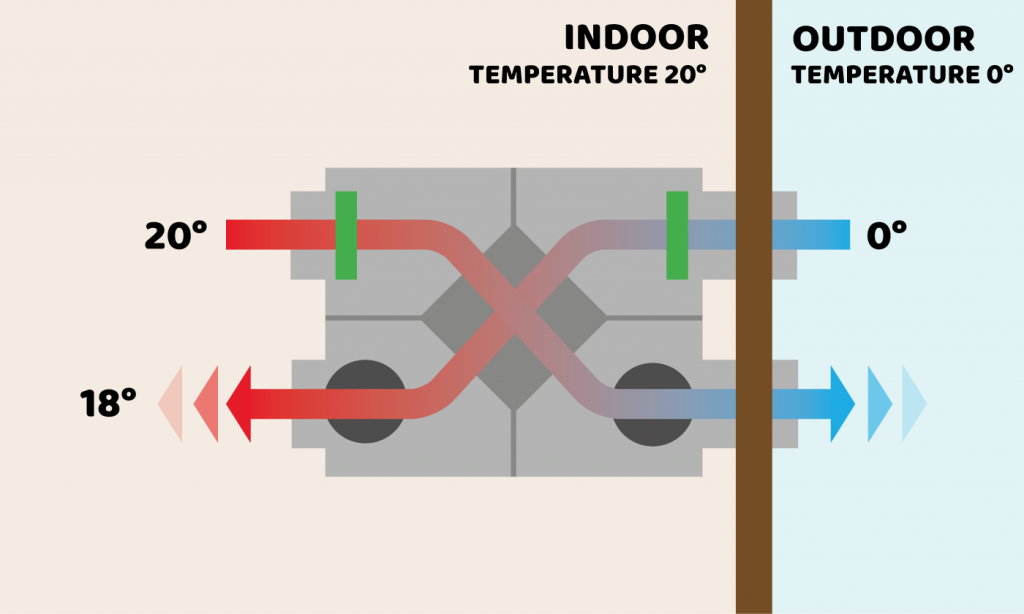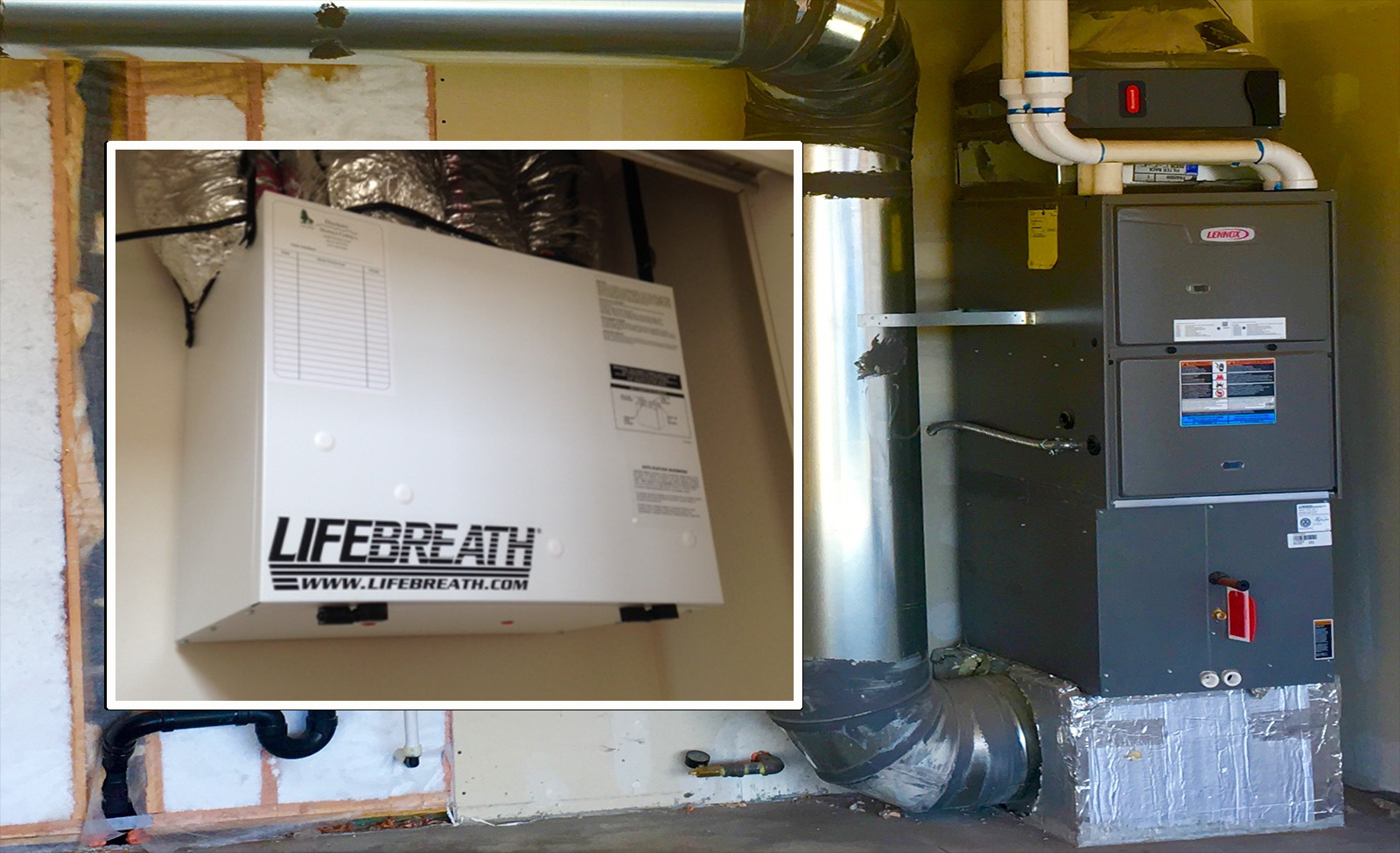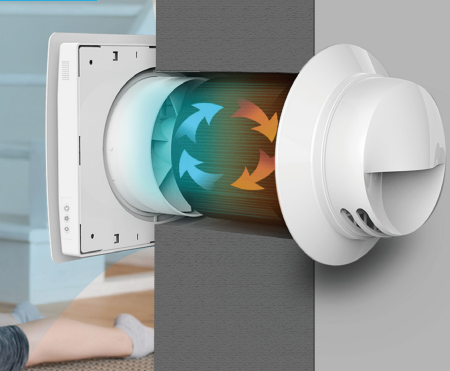The All-Inclusive Overview to the Uses of Heat Recovery Ventilation in Modern Buildings
Heat Recovery Ventilation (HRV) systems stand for a significant advancement in building technology (HRV Heat Recovery Ventilation). They offer a method for trading stagnant interior air with fresh exterior air while lessening power loss. This strategy not only improves interior air top quality but also contributes to power performance in both residential and commercial structures. Comprehending the different applications and benefits of HRV can expose its essential role in contemporary design and sustainability efforts. The effects of this technology deserve checking out better
Comprehending Heat Recovery Ventilation Equipments

Lots of modern-day buildings focus on energy performance, recognizing heat recuperation air flow (HRV) systems is important for maximizing interior air quality and minimizing energy consumption. HRV systems work by transferring heat from stale indoor air to inbound fresh air, properly preserving comfortable interior temperatures while minimizing energy loss. These systems contain a heat exchanger, followers, and ductwork that help with the circulation of air. Throughout winter season, HRV units capture and recycle warmth from the outgoing air, while in summer season, they can help cool down inbound air. By constantly exchanging air, HRV systems likewise minimize humidity and the focus of interior contaminants. Appropriate installment and upkeep of HRV systems are necessary for their performance and effectiveness in boosting general building performance and comfort.
Benefits of Heat Recovery Ventilation
Heat recovery ventilation systems offer many advantages that boost both power efficiency and interior air top quality in modern-day buildings. By recording and recycling power from exhaust air, these systems greatly reduce heating & cooling expenses, leading to lower energy consumption. They preserve a stable flow of fresh outdoor air, decreasing the threat of interior air toxins and irritants. This continuous exchange aids regulate moisture levels, preventing mold development and ensuring a much healthier living environment. Additionally, HRV systems add to sustainability goals by lowering general carbon impacts. Their ability to optimize air flow without sacrificing thermal comfort makes them a useful addition to modern structure design, promoting both financial and eco-friendly advantages.
Applications of HRV in Residential Structures
As property owners significantly prioritize power performance and interior air high quality, the applications of heat recovery air flow (HRV) systems in household buildings have ended up being much more common. HRV systems are particularly anchor beneficial in snugly secured homes, where keeping fresh air flow is crucial for protecting against wetness accumulation and interior toxins. They properly transfer warmth from outgoing stale air to incoming fresh air, decreasing power prices connected with heating & cooling. Additionally, HRVs can enhance comfort levels by regulating humidity and temperature. They are likewise adaptable for various domestic layouts, including single-family homes and multi-unit structures. Generally, integrating HRV systems sustains lasting living methods while guaranteeing a much healthier interior atmosphere for occupants.
HRV in Commercial and Commercial Setups
In industrial and industrial setups, the application of warmth healing ventilation (HRV) systems has these details ended up being progressively crucial for enhancing power performance and maintaining air quality. These systems effectively move warm from exhaust air to incoming fresh air, lowering the demand for additional heating or cooling. This not only decreases energy expenses yet additionally adds to sustainability initiatives. Industries such as production, warehousing, and office structures benefit significantly from HRV systems, as they aid regulate temperature and moisture levels, making sure a comfy and effective environment. HRV systems aid in removing impurities and excess wetness, boosting indoor air quality. As policies around air quality end up being stricter, the fostering of HRV innovation is most likely to expand, making it an important component of modern industrial and industrial framework.
Future Fads in Heat Recovery Ventilation Modern Technology

Frequently Asked Concerns
Just How Does Heat Recovery Ventilation Effect Indoor Air High Quality?
Heat recovery ventilation substantially boosts interior air high quality by continually trading stale interior air with fresh outside air while recovering energy. This process reduces toxins, preserves optimal moisture levels, and assures a healthier atmosphere for residents.
Can HRV Systems Be Set Up in Existing Buildings?
HRV systems can indeed be set up in existing buildings. Retrofitting might call for modifications to ductwork and air flow layouts, but it substantially boosts power performance and interior air quality, making it a viable alternative for older structures.
What Upkeep Is Needed for HRV Equipments?

Are There Particular Climates Where HRV Is Much More Effective?
Heat recovery ventilation systems are particularly reliable in climates with significant temperature differences between seasons. These systems enhance energy efficiency by recovering heat from exhaust air, making them excellent for both cold and reasonably cozy atmospheres.
Exactly How Do HRV Solutions Affect Energy Costs?
